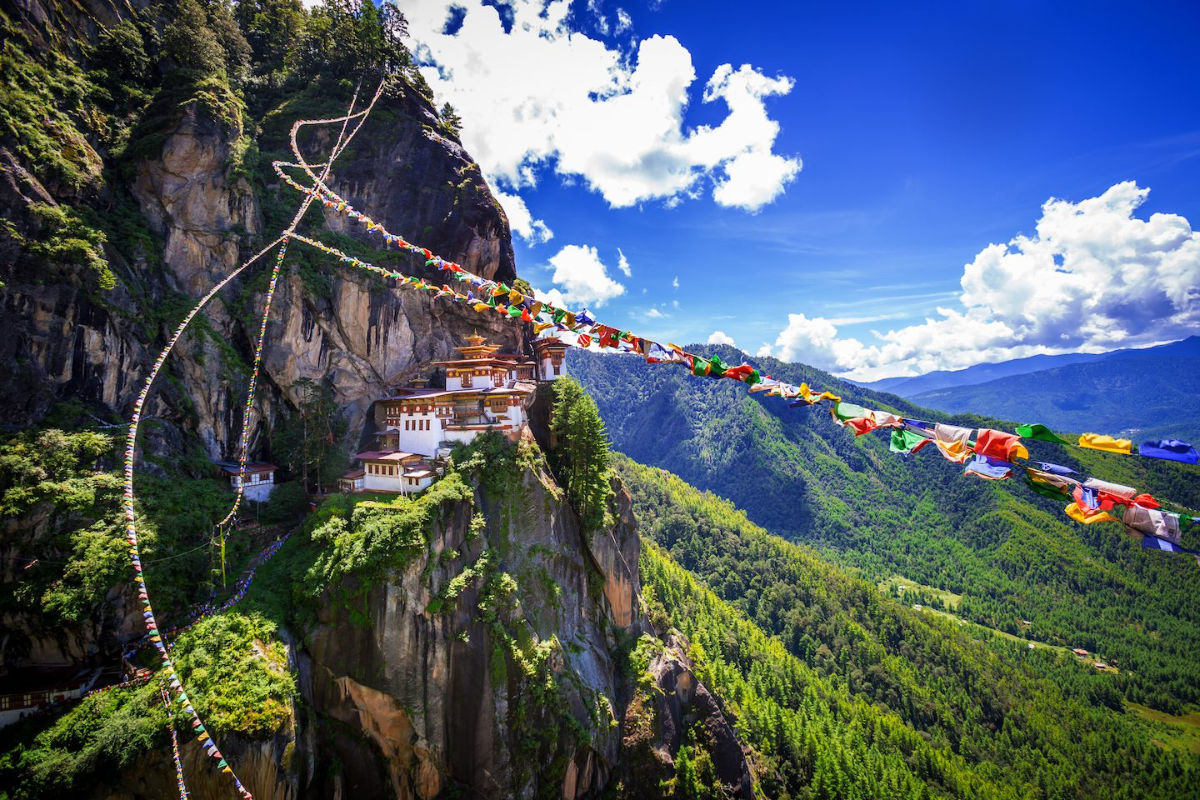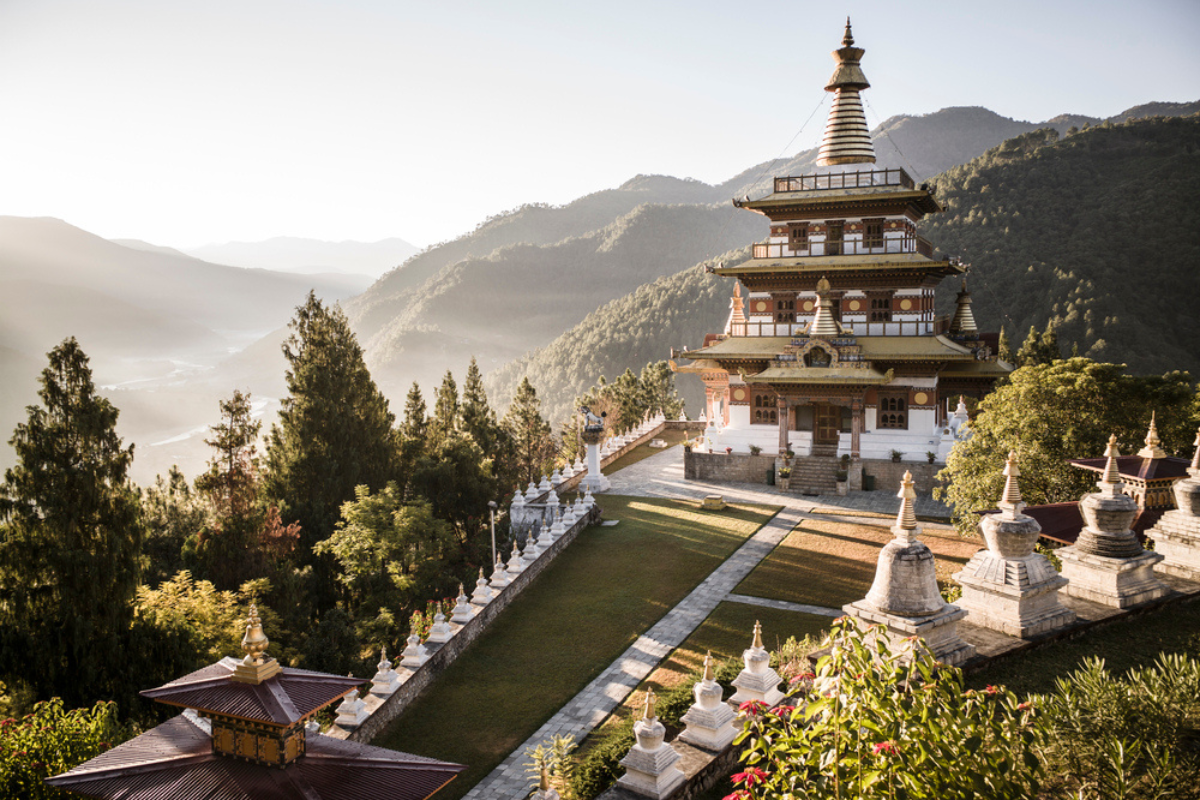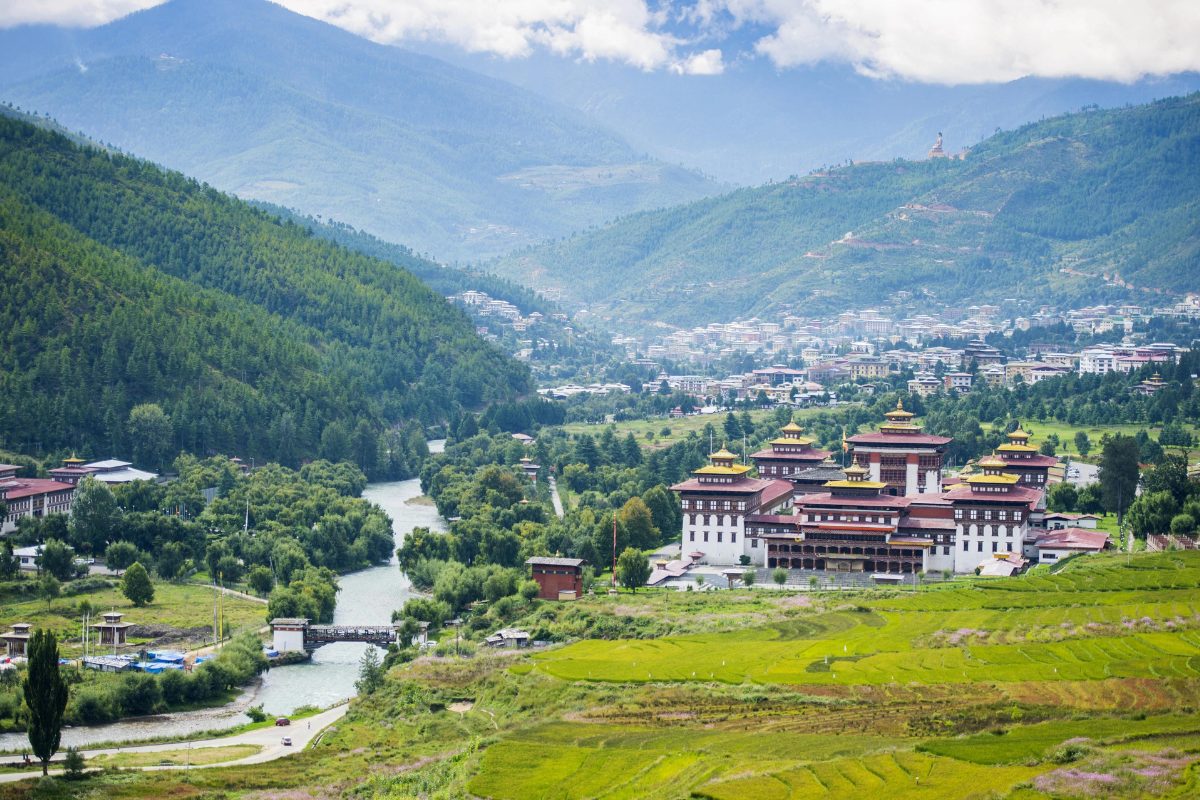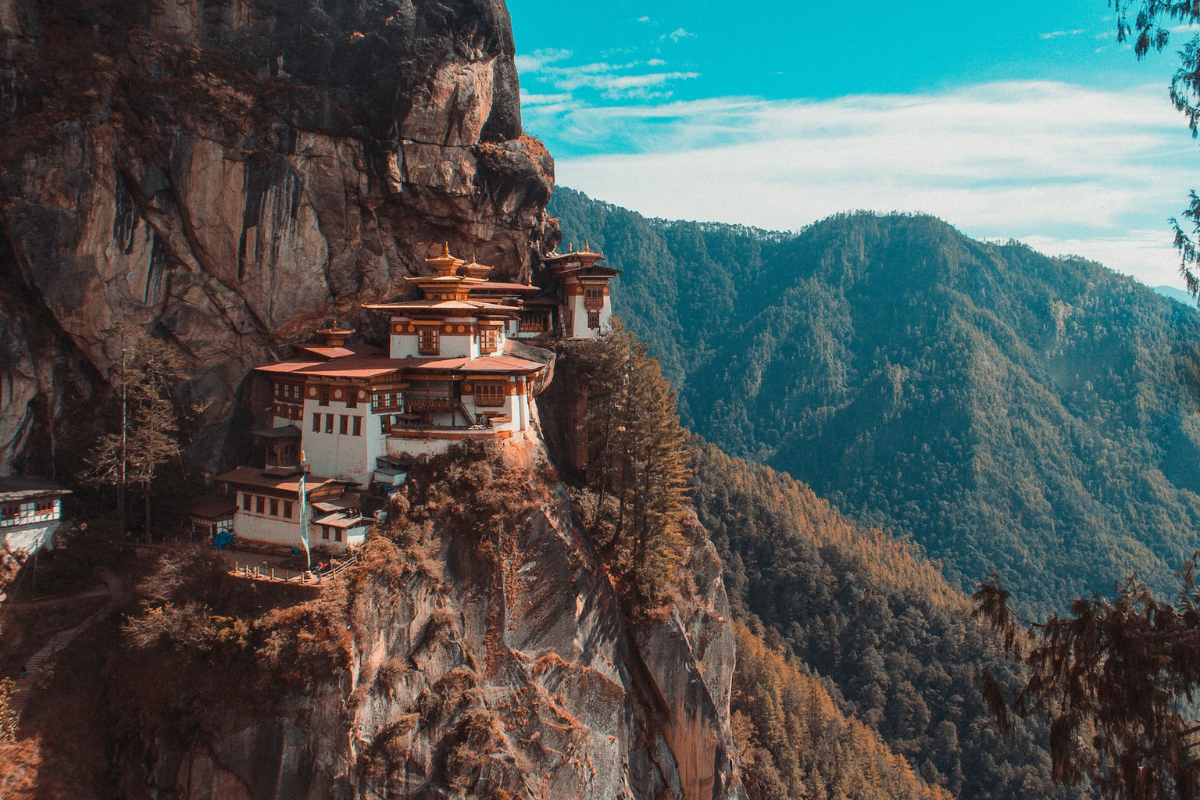Nestled amidst the majestic Himalayas, Bhutan, the Land of the Thunder Dragon, has long been lauded for its unique philosophy of prioritizing well-being over material wealth. Now, this tiny kingdom embarks on an ambitious project: constructing a happy city to attract tourists and further its pursuit of happiness. This venture, however, is not without its complexities and raises questions about the very essence of happiness itself.

Photo: The Honeycombers
Tourism has become a vital economic driver for Bhutan, allowing the kingdom to showcase its GNH philosophy and pristine natural beauty to the world. However, the tourist influx also poses challenges. The government, concerned about preserving its cultural heritage and pristine environment, has implemented a “High Value, Low Volume” tourism policy, carefully regulating tourist numbers and imposing a minimum daily spending requirement.
The ‘Happy City’ Project: A vision for sustainable tourism
The “Happy City” project, envisioned near the town of Gelephu, aims to become a model for sustainable tourism development. Spread over 1,000 square kilometers, the city will prioritize sustainable architecture, green spaces, and community engagement, fostering a sense of well-being for residents and visitors alike.
The project promises a unique tourist experience, immersing visitors in Bhutan’s cultural heritage and philosophy of happiness. Tourists can expect to participate in traditional activities, engage with local communities, and experience the natural splendor of the Himalayas, all while contributing to the local economy and adhering to sustainable practices.
While the “Happy City” project holds immense potential, it also faces significant challenges. Critics argue that the project might be driven by economic gain rather than genuine happiness principles. The large scale of the project raises concerns about environmental impact and potential cultural homogenization. Additionally, ensuring the well-being of both residents and visitors within the city requires careful planning and execution.

Photo: The Standard (HK)
Furthermore, the concept of “happiness” itself is subjective and culturally contingent. What constitutes happiness for Bhutanese citizens might not resonate with tourists from diverse backgrounds. The project needs to be mindful of these differences and avoid imposing a singular notion of happiness on its visitors.
Bhutan’s “Happy City” project embodies a bold attempt to bridge the gap between economic development, cultural preservation, and the pursuit of well-being. While the journey ahead presents significant challenges, the project’s potential to create a sustainable and enriching tourist experience while remaining grounded in Bhutan’s unique philosophy is undeniable. The world watches with anticipation as Bhutan embarks on this ambitious quest for joy, hoping to learn valuable lessons about happiness, sustainability, and responsible tourism development.
Possible specific features and plans for the “Happy City”
The blueprints for Bhutan’s “Happy City” envision a unique urban center where sustainability, cultural immersion, and well-being are woven into the very fabric of its design.
The city aims to be a beacon of environmental responsibility, with a strong focus on renewable energy sources like solar and hydropower. Green building practices will be prioritized, incorporating locally sourced materials and energy-efficient designs. Additionally, the city plans to implement a robust waste management system, minimizing environmental impact and promoting responsible resource utilization.

Photo: Expedia
The “Happy City” aspires to be a vibrant hub for Bhutanese culture and traditions. This will be reflected in the design of public spaces, incorporating traditional architecture, local art installations, and designated areas for showcasing Bhutanese crafts and performances. The city also plans to establish cultural centers and museums, offering visitors a deeper understanding of Bhutan’s rich heritage and fostering a sense of pride among residents.
Staying true to the philosophy of happiness, the “Happy City” will prioritize the well-being of its residents and visitors alike. This will involve incorporating green spaces and parks that encourage outdoor recreation and mental well-being. Additionally, the city plans to establish facilities promoting physical and mental health, such as yoga centers, meditation spaces, and access to traditional Bhutanese holistic healing practices.
The educational system within the “Happy City” aims to go beyond traditional academics, incorporating elements of principles. This could involve teaching students about environmental responsibility, cultural heritage, and emotional well-being alongside core subjects. The goal is to foster well-rounded individuals who contribute positively to their community and embrace the values of happiness and sustainability.

Photo: Destination Think
The “Happy City” plans to leverage smart technologies to optimize resource management and enhance the overall living experience. This could involve implementing intelligent traffic management systems, utilizing real-time data to monitor and optimize energy consumption, and developing digital platforms for residents and visitors to access information and services.

